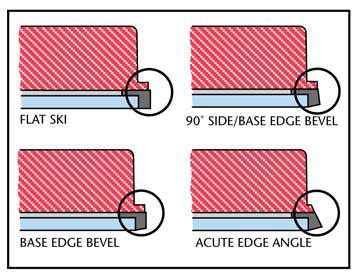



Just a quick reminder that the feel of balancing on skis in motion and the understanding of edge control will come in time. If a skier does not move far enough to the inside of a turn and the corresponding edge angles are too low, the skis won’t hold their intended path they will slip or skid sideways, and compromise balance. If a skier moves too far to the inside of a turn and the corresponding edge angles are too high, the skis will tend to go straight and not continue in a curved path, and/or the skier will fall onto his or her hip. Any lateral movement a skier uses to increase or decrease the angle of the skis on the snow affects balance. Hip angulation naturally chives in as the speed increases.Īnd remember that some turns require higher edge angles, while other turns benefit from lower angles. In shorter terms, knee angulation is present in most turns, but is more apparent in shorter and slower ones. On the Simulator, Hip Angulation will be developed as speed and intensity increases. This type of angulation is most apparent through the shaping and finish phases of turns. It allows a skier to adjust edge angle while maintaining balance toward the outside ski as forces increase in a turn. Hip angulation refers to the angle created at the hip joint. Knee Angulation is the first edge control movement developed on the SkyTech Sport Ski Simulator. In this respect, knee angulation is mostly a result of lateral and rotational motion of the leg combined with bending the knee joint.Īs forces increase due to greater speed, hip angulation keeps the body in stronger alignment, although slight adjustments in knee angulation can be used to fine-tune edge angle. The knee joint has little lateral movement, especially when the leg is straight. Knee angulation, while present in most turns, is most apparent in shorter turns where the forces are not long-lasting, or in instances when greater edge angles are required at slower speeds. Knee angulation refers to the appearance of angle created at the knee joint. Two types of angulation are commonly used in skiing: In skiing, inclination is the general term for any lateral movement of a skier toward the inside of a turn.Īngulation refers to movements that create angles between body parts. Inclination occurs when there is deviation from a vertical position. Effective edge control involves using only the amount of edge angle necessary to accurately affect the path of the ski through a turn, promoting a gliding action of the skis. A low edge angle results when the ski is tipped less and is flatter on the snow. This is achieved by tipping the skis to the right or to the left.Ī high edge angle is when the ski is tipped more on edge, increasing the angle between the base of the ski and the snow. If you’ve ever seen people skiing downhill, you’d notice that they go in a serpentine manner. This angle has a significant impact on both speed and direction of travel. Edge control is the ability to tip the ski onto its edge and adjust the angle between the base of the ski and the snow. In other words, skiers use this action to increase or decrease the ski-to-snow angle. If you find yourself lost in the lingo, we have a quick vocab list for your convenience at the end of each article.Įdge control refers to tipping the skis relative to the length or longitudinal axis of the skis. But we try to break it down for you in a simpler terms so that together we build and expand our knowledge one building block at a time. Sometimes getting familiarized with a completely new skill might seem intimidating. These skills provide a clear framework to analyze the action of the skis on the snow and the skier’s movements to accomplish these actions.

Knowledge of these three skills – edge control, pressure control, and rotational control – are integral to all turns, and they are essential for maintaining balance.


 0 kommentar(er)
0 kommentar(er)
